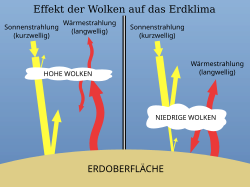97% of Climate Scientists Confirm Anthroprogenic Global Warming
The figure is based on Doran 2009 and Anderegg 2010 studies.
Doran & Zimmerman 2009 study:
http://tigger.uic.edu/~pdoran/012009_Doran_final.pdf
Anderegg et al. 2010 study:
http://www.pnas.org/content/early/2010/06/04/1003187107.full.pdf en:Proceedings of the National Academy of Sciences of the United States of America
http://www.pnas.org/content/suppl/2010/06/07/1003187107.DCSupplemental/pnas.201003187SI.pdf
The first study (Doran & Zimmerman 2009) is a survey with 2 questions. In the first question, 96.4% of "climatologists who are active publishers on climate change" agree that mean global temperatures have risen "compared with pre-1800s levels" (compared with before the 1550-1850 A.D. Little Ice Age ended). In the second question, 97.4% (75 of 77) agree that human activity "is a significant contributing factor" in temperature change. The study concludes the distribution of answers to its survey questions implies that debate on the "role played by human activity is largely nonexistent" amongst climate experts.
According to the second study (Anderegg et al. 2010), there are only 2% to 3% UE ("unconvinced by the evidence") disagreeing scientists amongst a group of 50 to 200 climate researchers ranked as top. Expertise was defined as determined by the number of articles published by climate journals. The top 50 scientists considered CE ("convinced by the evidence") wrote an average of 408 articles each which were successfully published.
Scientists were counted as UE if having signed a public "statement strongly dissenting from the views of the IPCC." That resulted in a list of 472 UE scientists, of whom 1 was in the top 50 ("2% of the top 50 climate researchers") as defined by the publication-number ranking system.
Scientists were counted as CE ("convinced by the evidence") when in the list of those credited by the IPCC as having done research utilized by AR4 Working Group I. That resulted in a list of 619 names, which, after adjusting for duplication, became a total of 903 when also adding in those who signed one of several statements supporting the IPCC.Relevante Bilder




Image source: Canty, T., Mascioli, N. R., Smarte, M. D., and Salawitch, R. J.: An empirical model of global climate – Part 1: A critical evaluation of volcanic cooling, Atmos. Chem. Phys., 13, 3997–4031, https://doi.org/10.5194/acp-13-3997-2013, 2013.
Original plot: US National Climate Assessment 4.
Merging of factors into composite lower panel and common °F scale: User:RCraig09.
Translation and °C scale: User:DeWikiMan, CC BY-SA 4.0






































Relevante Artikel
Globale ErwärmungMit globale Erwärmung – umgangssprachlich auch „der Klimawandel“, „Erderwärmung“ oder auch „Erderhitzung“ – wird der gegenwärtige Anstieg der Durchschnittstemperatur der erdnahen Atmosphäre und der Meere bezeichnet. Es handelt sich um einen menschengemachten Klimawandel, der eine Folge von Netto-Treibhausgasemissionen ist, die seit Beginn der Industrialisierung durch Nutzung von fossilen Energieressourcen sowie nicht-nachhaltiger Forst- und Landwirtschaft entstanden sind. Die Treibhausgasemissionen erhöhen das Rückhaltevermögen für infrarote Wärmestrahlung in der Troposphäre, wodurch der natürliche Treibhauseffekt verstärkt wird. Wichtigstes Treibhausgas bei der derzeitigen globalen Erwärmung ist Kohlenstoffdioxid (CO2), dazu kommen weitere wie z. B. Methan und Distickstoffmonoxid. Die von der Messstation Mauna Loa gemessene mittlere CO2-Konzentration in der Erdatmosphäre stieg von ursprünglich etwa 280 ppm vor Beginn der Industrialisierung auf inzwischen über 420 ppm. .. weiterlesen
